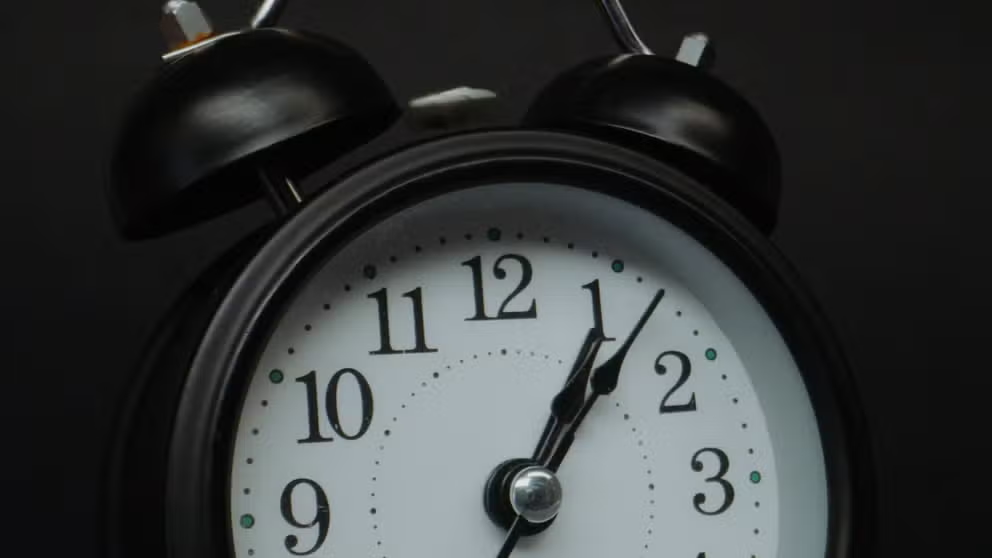What is the history of daylight saving time?
Daylight saving time became federal law in the United States in 1966. The history of DST, however, dates back much further, and its future remains uncertain.
Explained: What is daylight saving time and why we turn our clocks back
Daylight saving time, or DST, allows for an extra hour of light in the evening during the warmer months.
Twice a year, time changes sweep across the country. Clocks jump forward one hour in the spring to begin daylight saving time and then slide back an hour in the fall to end it.
"The real goal of daylight saving time is to move the hours of human activity to make the best use of daylight," said David Prerau, computer scientist and author of "Seize the Daylight."
While today’s night owls may scoff at the notion, this wrangling of time to make the most of daylight dates back over a century, with motivations - and controversy - rooted in patriotism, practicality and public opinion.
Who invented daylight saving time?
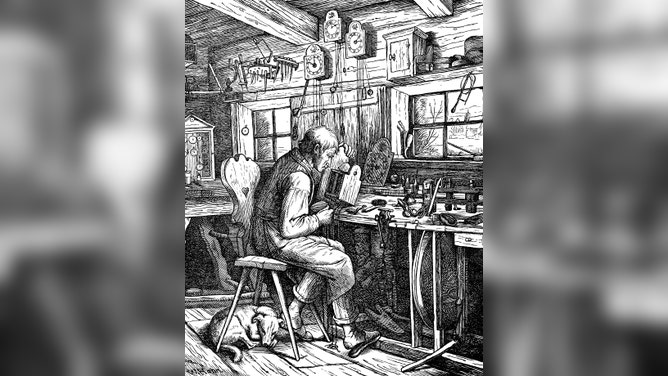
A clockmaker in his workshop, 1881.
(Bildagentur-online / Universal Images Group / Getty Images)
The concept of daylight saving time can be attributed to three people, according to Prerau.
The first person was Benjamin Franklin in the 18th century. Franklin noted that waking up closer to sunrise gave him more hours of daylight to illuminate his home. This allowed him to use fewer smoky and expensive candles, which helped him save energy.
HOW WAS THE WEATHER IN PHILADELPHIA WHEN THE U.S. ADOPTED THE DECLARATION OF INDEPENDENCE
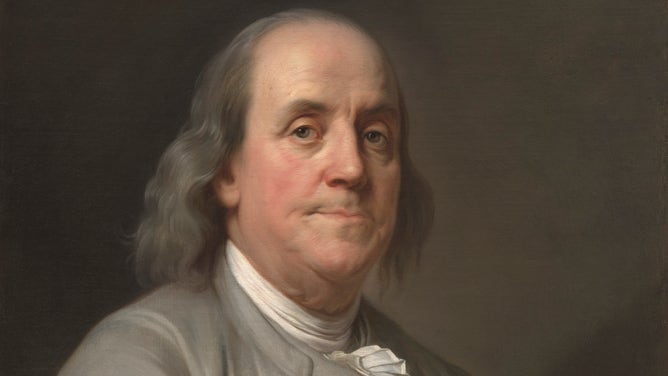
Portrait of Benjamin Franklin by Joseph Siffred Duplessis. 1785.
(Circa Images / GHI / Universal History Archive / Universal Images Group / Getty Images)
The second person was George Bernard Hudson, who lived in New Zealand in the late 19th century. Hudson was an entomologist and astronomer who proposed the idea of moving clocks forward to the Wellington Philosophical Society.
The third person was William Willett in the early 20th-century United Kingdom. A builder and member of the Royal Astronomical Society, Willett introduced a bill in the British Parliament to officially enact a time change.
While none of the three saw their idea of saving daylight come to fruition, the idea was later revived for an unexpected purpose — war.
When was daylight saving time started and why?
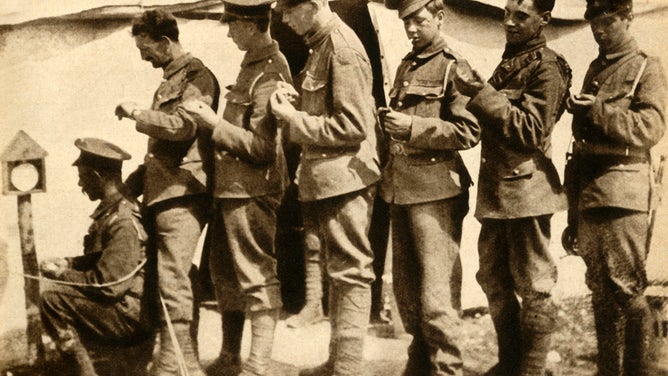
British soldiers synchronizing their watches on the front line during World War I.
(The Print Collector / Getty Images)
Some of the first people to adopt daylight saving time did so in World War I, according to Prerau.
He said the Germans adopted it in 1916 to help save energy. The British followed suit almost immediately, after having rejected it for many years.
HOW KITES WERE USED FOR WAR AND SCIENCE
Prerau added that other countries on both sides of the war – including the U.S. – also adopted the time change for the sake of conserving energy.
"It was a big issue during the war, and (daylight saving time) was a way that they would work to save energy," he said.
Did farmers support or oppose daylight saving time?
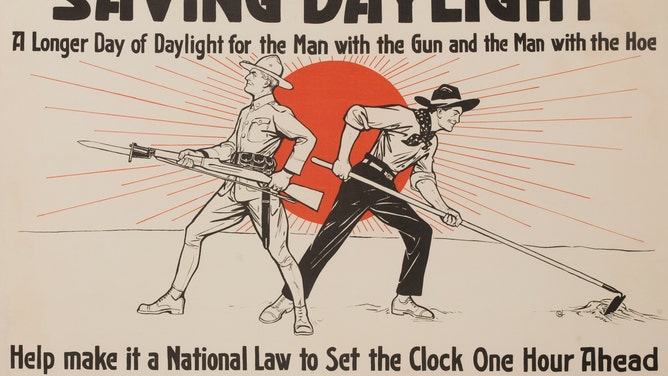
A United Cigar Stores Company ad claiming that daylight saving time benefits soldiers and farmers. However, farmers begged to differ.
(David Pollack / Corbis / Getty Images)
Once World War I ended, pushback against daylight saving time grew, particularly from farmers.
"This is against what most people think because most people think that daylight saving time was put in for farmers – it’s the exact opposite," said Prerau. "Farmers have been the leading group against daylight saving time."
He noted that, at a time when most of the country was still rural, the people successfully had Congress repeal the time change.
Nixed on the federal level, daylight saving time was only able to occur on the local level – for a while.
When did daylight saving time start in U.S. history – again?

Grenadier Guards of the British Army check the time while serving on the lines.
(Keystone-France / Gamma-Keystone / Getty Images)
In the mid-20th century, the country experienced a bit of a Déjà vu.
"As soon as World War II started, the British and the Germans, who were fighting each other at the beginning – the major countries fighting each other – both adopted daylight saving time for the war effort," said Prerau.
WRECKAGE OF NAVY SUBMARINE FROM WORLD WAR II FOUND OFF JAPAN'S COAST
When the U.S. joined World War II, the country put on daylight saving time for the war effort, as well. But after the war ended, the time change was once again repealed by Congress.
However, unlike the public sentiment toward daylight saving time after the First World War, after World War II, more people were supportive of the time change, and many localities began to adopt it.
How did daylight saving time become standard?
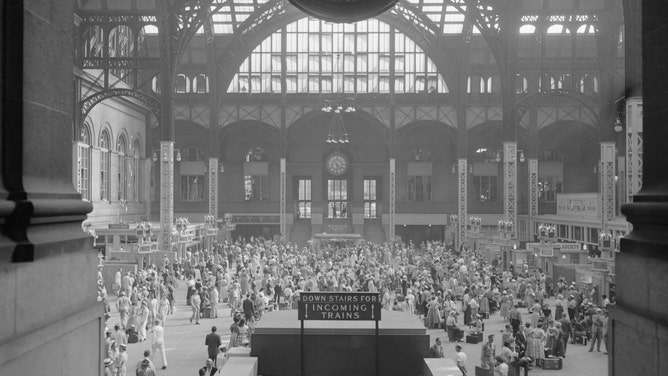
Travelers make their way between railway, bus, and airplane terminals at Penn Station in 1954 New York City.
(Bettman / Getty Images)
The adoption of daylight saving time was spotty across the country, said Prerau, varying from state to state and town to town and causing plenty of confusion.
For example, during a 35-mile bus ride between Steubenville, Ohio, and Moundsville, West Virginia, a traveler would cross seven time zones.
In 1966, the federal government passed the Uniform Time Act to standardize time across the country.
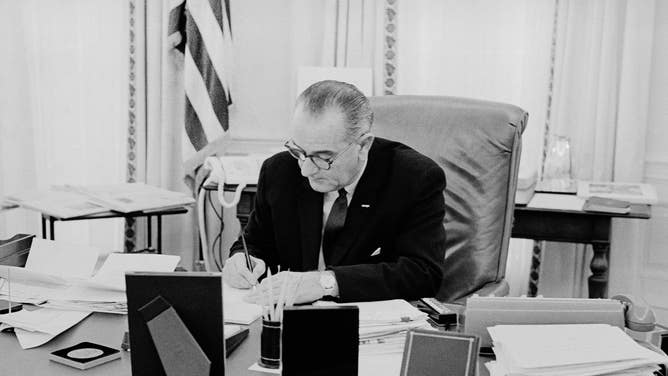
President Lyndon B. Johnson working in the Oval Office at the White House. Johnson signed the Uniform Time Act into law in 1966.
(Thomas J. O'Halloran / Getty Images)
According to Prerau, the law said that a state doesn't have to have daylight saving time if it doesn't want to. But if it does want to have daylight saving time, it has to be statewide.
HOW DAYLIGHT SAVING TIME CAN IMPACT YOUR HEALTH
Also, the states with daylight saving time would need to start on the same date and end on the same date, with the federal government setting those start and end dates.
"So, that's the law we have today," Prerau said.
Which states do not observe daylight saving time?

The sun shines on the Napali Coast on the island of Kauai in Hawaii.
(Paul Mounce / Corbis / Getty Images)
Daylight saving time is now observed in 48 states, with the outliers being Hawaii and Arizona. According to Prerau, the two outliers have specific reasons that make them different from any other state.
"Hawaii is by far the most southern state, the state closest to the equator," said Prerau. "As we get close to the equator, the sunrises and sunsets don’t change very much over the year. Therefore, they have much less benefit of daylight saving time than most other states."
Additionally, Hawaii’s distance from the mainland keeps the state isolated and less concerned about matters with neighboring states.

Skyline of Phoenix, Arizona.
(Joshua Lott / Bloomberg / Getty Images)
Arizona, on the other hand, has a different issue to contend with – the heat. Preraus said the two most populous parts of the state, Phoenix and Tucson, are so hot in the summer that the last thing they want to have in the summer is more daylight.
HEAT, MONSOONAL ACTIVITY INCREASE SCORPION ACTIVITY IN ARIZONA
Also, the Grand Canyon state is a house divided. The Navajo Nation in the northeast region of the state observes daylight saving time, but the Hopi Nation—whose territory is encircled by the Navajo Nation—opts out of the time change.
Will daylight saving time become permanent?
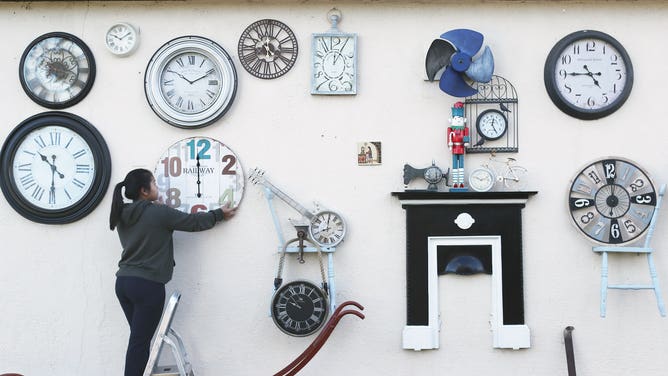
Sky Sangari Phunman changes the time on the clocks in her home. She collected clocks in memory of her grandfather, who specialized in horology, or the study of time.
(Niall Carson / PA Images / Getty Images)
Daylight saving time has sown divisions over the years, stirring debate about whether it should become permanent or end once and for all.
In December 1973, a bill was signed into law to make daylight saving time permanent for two years. Called the Emergency Daylight Savings Time Energy Conservation Act, the law was intended to help the U.S. save energy during the oil crisis.
After a few months, however, the once-supportive public soured on the permanent time change. The law was amended on October 1974, making daylight saving time last a few months a year once again.
In another case of Déjà vu, Congress put forth another bill decades later to make daylight saving time permanent. The Sunshine Protection Act was first introduced in January 2021. Congresss has made several attempts at getting the bill to the president's desk since then. Whether it becomes law is yet to be determined, and the future of the Sunshine Protection Act remains in limbo.
